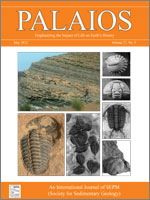The molecular preservation of exceptionally preserved conifer needles from middle Miocene and Pliocene deposits on Banks Island, Canada, was investigated using pyrolysis–gas chromatography–mass spectrometry (Py-GC-MS). Solvent-extracted residues from Miocene Larix, Glyptostrobus, and Pinus, Pliocene Picea, and their associated bulk material, yielded abundant polysaccharide pyrolysis products, such as 2-methylfuran, 2-furaldehyde, and levoglucosan, indicating excellent molecular preservation. Comparison of pyrolysates of individual plant taxa and bulk material from the same deposits revealed the dominance of particular plant taxa in these high latitude floras. Comparison with fossil Lagerstätten from Ellesmere Island (late Paleocene) and Axel Heiberg Island (middle Eocene), both in the Canadian Arctic Archipelago, and Clarkia in Idaho, United States (middle Miocene), demonstrated that the quality of molecular preservation of material from Banks Island is similar to that of Axel Heiberg Island and lies between those of Ellesmere Island and the Clarkia deposit. The ranking of molecular preservation was paralleled by scanning electron microscopy (SEM) observations. Analysis of Larix and Glyptostrobus from different geological ages (Eocene–recent) and locations indicated that age does not correlate with molecular preservation in these fossil Lagerstätten. When relative abundance ratios of vinyl phenol (m/z 91 120), guaiacyl (m/z 109 124), and levoglucosan (m/z 60 73) are used as indicators of the preservation of cutin, lignin, and cellulose, our results suggest that variations in the pyrolysates among several genera reflect different original molecular compositions as well as paleoenvironmental conditions for preservation. The data also illuminate the role of labile biomolecules in the taphonomy of three-dimensionally preserved morphological structures in these Arctic plant fossils.
BioOne.org will be down briefly for maintenance on 17 December 2024 between 18:00-22:00 Pacific Time US. We apologize for any inconvenience.
How to translate text using browser tools
1 May 2012
MOLECULAR PRESERVATION OF CENOZOIC CONIFER FOSSIL LAGERSTÄTTEN FROM BANKS ISLAND, THE CANADIAN ARCTIC
CAITLYN WITKOWSKI,
NEAL S. GUPTA,
HONG YANG,
QIN LENG,
CHRISTOPHER J. WILLIAMS,
DEREK E. G. BRIGGS,
ROGER E. SUMMONS
ACCESS THE FULL ARTICLE
It is not available for individual sale.
This article is only available to subscribers.
It is not available for individual sale.
It is not available for individual sale.

PALAIOS
Vol. 27 • No. 5
May 2012
Vol. 27 • No. 5
May 2012




